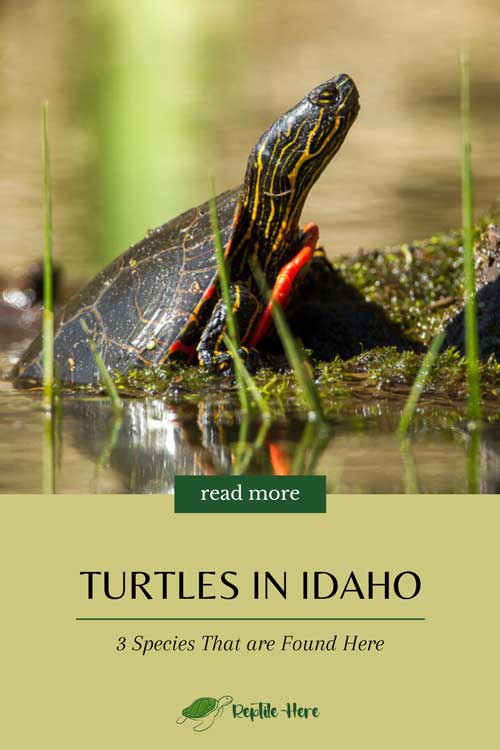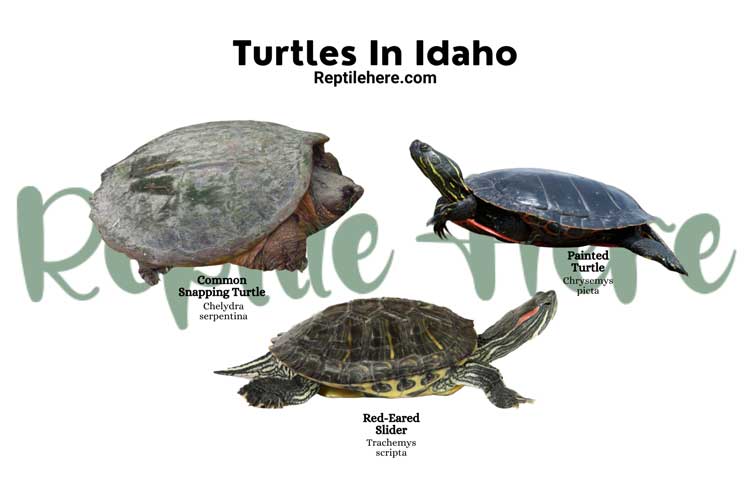Turtles In Idaho – 3 Species That are Found Here
Idaho is home to ONLY ONE native turtle species: The Painted Turtle. This turtle species gets its name from the bright yellow and red markings on its shell which appear as if they’ve been painted on it.
This turtle is widespread across the states and can be found in areas in Idaho such as Boise, Ada, Bingham, Fremont, Benewah, Bonneville, Owyhee, Shoshone, Madison, Latah, Lemhi, Jefferson, and Kootenai.
Besides the painted turtle, the landlocked state is also home to non-native (or invasive, if you like) turtle species namely the red-eared slider and snapping turtle, which found their way to the state through pet releases or pet trade.
Below, we’ll share with you the basic info you need to know about these turtle species in Idaho, including their physical appearance, average adult size, what they eat, where they live, lifespan, and conservation status.
3 Types Of Turtles In Idaho
Contents
1. Painted Turtle
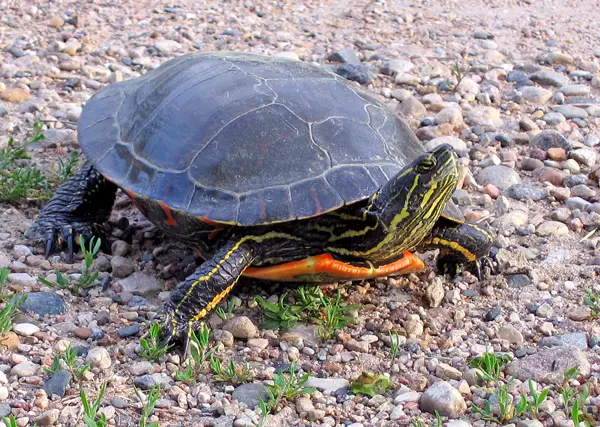
- Scientific name: Chrysemys picta
- Common name: Painted Turtle
- Family: Emydidae
- Size: 4 to 6 inches
- Lifespan: 30 to 50 years
- Conservation status: Least Concern
The Eastern painted turtle is one of the most recognizable turtle species in Idaho, thanks to its beautiful and unique coloring. The bright reds and yellow-green markings on its shell, head, and limbs are no doubt a beauty to behold!
This painted turtle sub-species in Idaho has been observed to live near water bodies with minimal movements. Examples include marshes, ponds, slow-moving streams with sandy/muddy bottoms, small lakes, etc.
They also prefer areas with aquatic plants in plenty as they make their primary food source in the wild.
One interesting fact about these Idaho turtles is their ability to hold their breath for up to 30 hours when inside temperate water. Moreover, they’re capable of standing dominant in freezing cold waters for up to 4 months.
Unfortunately, it’s not easy to establish the population of these turtles in Idaho. This is because most people who pet them end up releasing them back into the wild. This contributes to an ever-expanding range plus unstable reproduction rates for these turtles.
2. Common Snapping Turtle
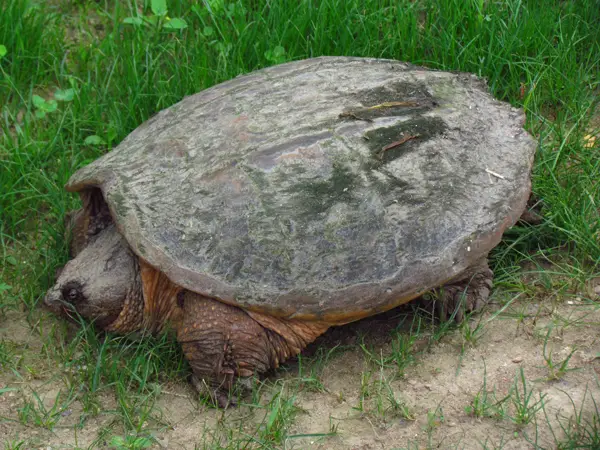
- Scientific name: Chelydra serpentina
- Common name: Snapping Turtle
- Family: Chelydridae
- Size: 8 to 18 1/2 inches
- Lifespan: 30 to 50 years or more
- Conservation status: Least Concern
Common snapping turtles are widespread throughout Idaho. An average adult is pretty large and has a shell length of 18½ inches long.
This species has a chunky head, a long tail, and large webbed feet. The shell color is black or olive and has no distinct pattern. These Idaho snapping turtles are known for their powerful jaws—they’re so strong that these turtles eat other turtles!
You’ll find them in waterbodies with muddy bottoms. Examples include marshes, ponds, lakes, rivers, and even shallow streams. They generally prefer waters with aquatic vegetation in plenty and foods such as fish, frogs, birds, etc.
These Idaho turtles generally show docile behavior but can get quite aggressive if taken out of water. The best way to calm it is to take it back to the waters, where it feels safe.
Also read: Turtles in Arkansas
3. Red-Eared Slider
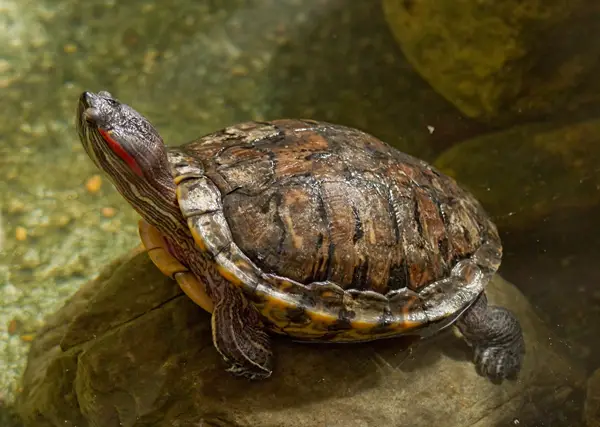
- Scientific name: Trachemys scripta
- Common name: Red-eared Slider, Red-eared Terrapin
- Family: Emydidae
- Size: 7 to 11 inches
- Lifespan: 30 to 40 years
- Conservation status: Least Concern
The red-eared slider is a sub-species of pond sliders and a native species of Idaho. It is a semi-aquatic turtle and prefers living in marshes, ponds, lakes, and creeks.
A red-eared slider gets its name from the small red stripe surrounding its ears (or behind the eye), and its ability to quickly slide off logs and rocks into the water.
Generally, the skin and shell coloration of this slider can be brown or black, with yellow stripes covering the skin.
The red-eared sliders of Idaho are pretty large and the adults reach 7-12 in length (though females are generally larger than males).
These Idaho pond sliders are omnivorous and like eating fish, snails, insects, and aquatic vegetation. they also eat land vegetation, including fruits and vegetables.
Related: Turtles in South Carolina
Conclusion
As you can see, the landlocked Idaho state doesn’t have many turtle species compared to most of the other states of the US.
The painted turtle is the only native species here and is widespread across the region.
The red-eared slider and snapping turtle species have also found themselves in Idaho as a result of the pet trade or through pet releases.
